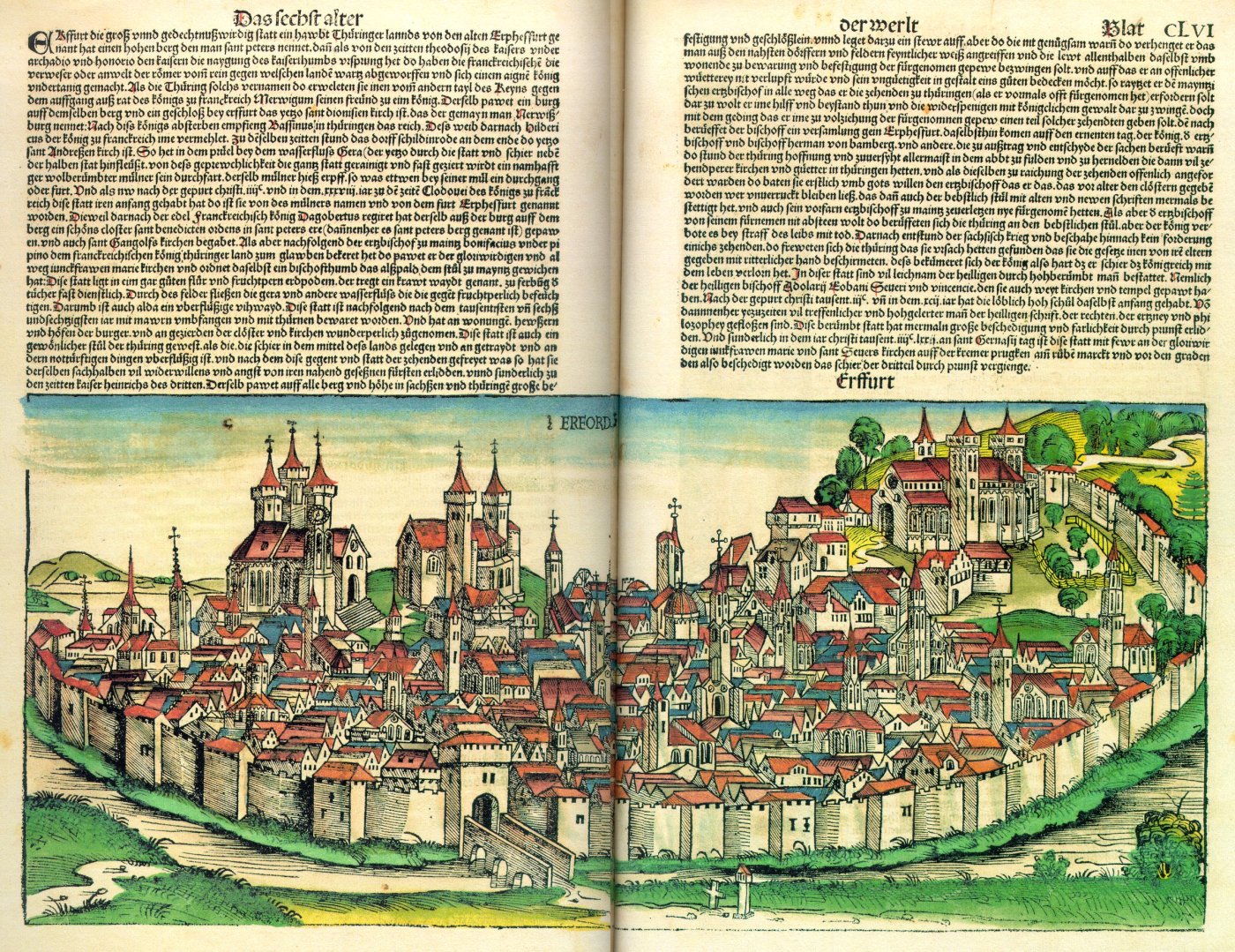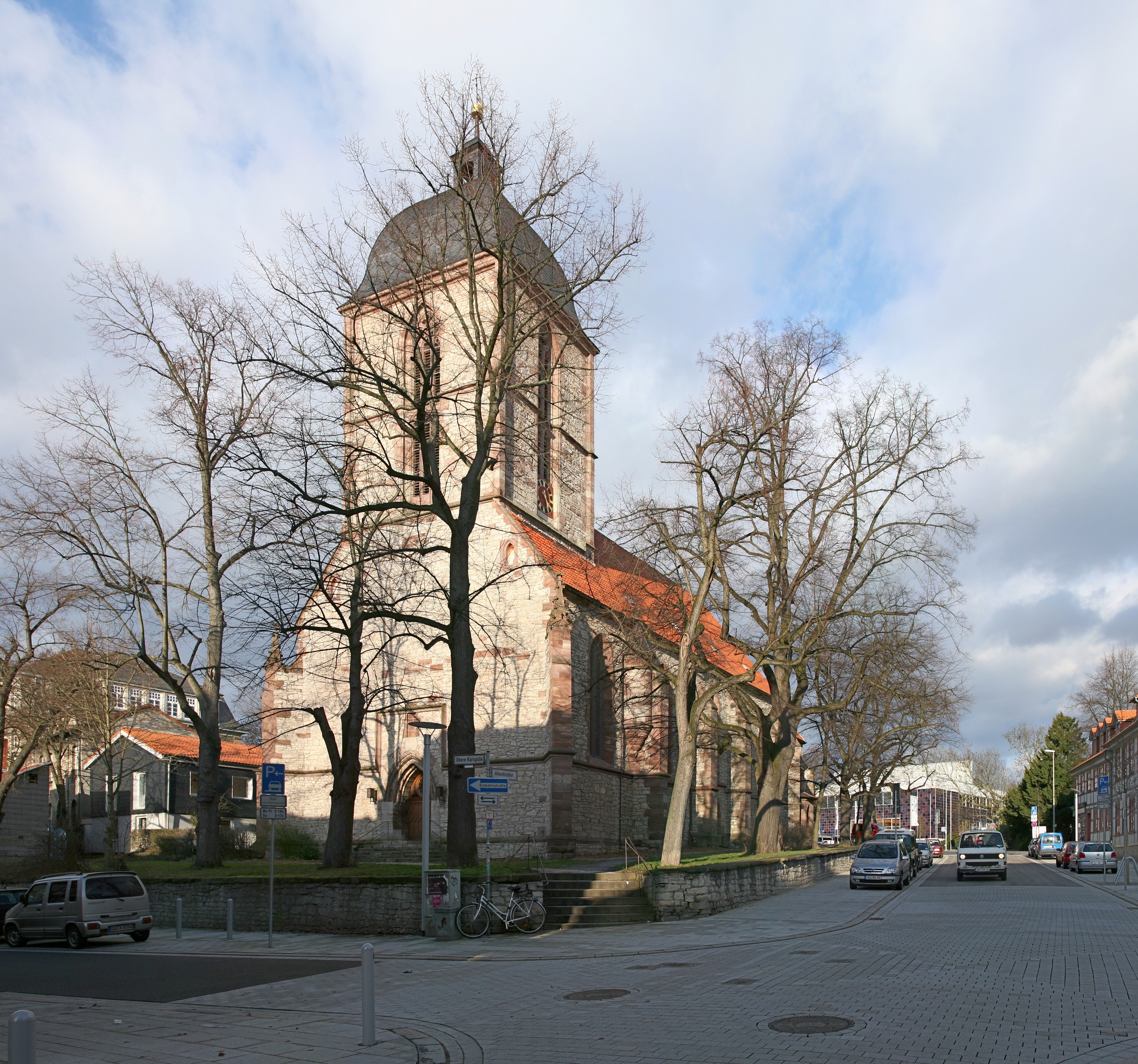|
Joachim Mörlin
Joachim Mörlin (5 April 1514, in Wittenberg, Electorate of Saxony – 29 May 1571, in Königsberg, Duchy of Prussia (now Kaliningrad in Russia) - 1945) was an Evangelical Lutheran theologian and an important figure in the controversies following Martin Luther's (1483-1546) death. He was the older brother of Maximilian Mörlin, another Lutheran theologian and Reformer. Early life Mörlin was born at Wittenberg, where his father, Jodok Mörlin, also known as Jodocus Morlinus, was the Professor of Philosophy at the University of Wittenberg. Joachim himself studied at the same University under Luther, Philipp Melanchthon, Justus Jonas, and Caspar Creuziger, Casper Cruciger the Elder from 1532 to 1536. After a brief residence at Coburg, he returned to Wittenberg and in 1539 became Luther's chaplain, declining a call to succeed Johann Gramann, Poliander at Königsberg. While a true pupil of Luther, Mörlin was more influenced by the dogmatics of Melanchthon, though devoid of sympathy ... [...More Info...] [...Related Items...] OR: [Wikipedia] [Google] [Baidu] |
Johann Gramann
Johann Gramann or Graumann (5 July 1487 – 29 April 1541), also known by his pen name Johannes Poliander, was a German pastor, theologian, teacher, humanist, reformer, and Lutheran leader. Life Gramann was born in Neustadt an der Aisch, Middle Franconia. He worked as rector of the Thomasschule in Leipzig. Poliander was Johann Eck's secretary at the 1519 Leipzig Debate, where he met Martin Luther and joined the Protestant Reformation. Poliander became pastor of Altstadt Church in 1525 in Königsberg (Kaliningrad), capital of the new Duchy of Prussia (a fief of the Crown of Poland), succeeding the fiery Johannes Amandus. The humanist was well-regarded by his peers, including the Catholic Johannes Dantiscus. He wrote secular and religious poetry in German and Latin. He was a strong advocate with Albert, Duke of Prussia, for the creation of the University of Königsberg. He donated his personal collection of 1,000 books to Altstadt's council; this became the foundation of ... [...More Info...] [...Related Items...] OR: [Wikipedia] [Google] [Baidu] |
Holy Roman Empire
The Holy Roman Empire, also known as the Holy Roman Empire of the German Nation after 1512, was a polity in Central and Western Europe, usually headed by the Holy Roman Emperor. It developed in the Early Middle Ages, and lasted for a millennium until its Dissolution of the Holy Roman Empire, dissolution in 1806 during the Napoleonic Wars. For most of its history the Empire comprised the entirety of the modern countries of Germany, Czechia, Austria, the Netherlands, Belgium, Switzerland, Slovenia, and Luxembourg, most of north-central Italy, and large parts of modern-day east France and west Poland. On 25 December 800, Pope Leo III crowned the Frankish king Charlemagne Roman emperor, reviving the title more than three centuries after the fall of the Western Roman Empire in 476. The title lapsed in 924, but was revived in 962 when Otto I, OttoI was crowned emperor by Pope John XII, as Charlemagne's and the Carolingian Empire's successor. From 962 until the 12th century, the empire ... [...More Info...] [...Related Items...] OR: [Wikipedia] [Google] [Baidu] |
William IV, Count Of Henneberg-Schleusingen
Princely count William IV of Henneberg-Schleusingen (29 January 1478 – 24 January 1559), a member of the House of Henneberg, was a ruler of the Principality of Henneberg, within the Holy Roman Empire. The son of William III of Henneberg, William inherited the Principality of Henneberg on 26 May 1480, when his father died, and reigned until his own death nearly eighty years later, on 24 January 1559. William married Anastasia of Brandenburg, a daughter of Albert Achilles, Elector of Brandenburg. In 1543–1544, William embraced the Protestant Reformation.Johannes A. Mol, Klaus Militzer, Helen J. Nicholson, ''The Military Orders and the Reformation'' (2006), p. 108 In 1554, he signed a treaty of inheritance with John Frederick II, Duke of Saxony. William died in Salorno five years later. However, when his successor George Ernest, the last Prince of Henneberg, died, both the Ernestine and the Albertine branches of the Wettin dynasty claimed his estates. In 1660, they were ... [...More Info...] [...Related Items...] OR: [Wikipedia] [Google] [Baidu] |
Schleusingen
Schleusingen is a town in the Hildburghausen (district), district of Hildburghausen, in Thuringia, Germany. It is situated 10 km north of Hildburghausen, and 12 km southeast of Suhl. Geography The town of Schleusingen in the Henneberger Land got its name from the river Schleuse, which passes through its town districts Ratscher and Rappelsdorf. The town itself is located on the river Nahe (Schleuse), Nahe, a tributary of the Schleuse, which runs south of the core town area. From the north, from Erlau, the river Erle (river), Erle joins the Nahe in Schleusingen. Subdivisions The town of Schleusingen includes next to the core town another seventeen districts: Altendambach, Breitenbach, Erlau, Fischbach, Geisenhöhn, Gethles, Gottfriedsberg, Heckengereuth, Hirschbach, Hinternah, Oberrod, Rappelsdorf, Ratscher, Schleusingerneundorf, Silbach, Sankt Kilian and Waldau In addition, terms for residential areas such as' 'Upper-' 'and' 'Lower Town, Schmuckplatz, Weißer Berg, ... [...More Info...] [...Related Items...] OR: [Wikipedia] [Google] [Baidu] |
Arnstadt
Arnstadt () is a town in Ilm-Kreis, Thuringia, Germany, on the river Gera (river), Gera about south of Erfurt, the capital of Thuringia. Arnstadt is one of the oldest towns in Thuringia, and has a well-preserved historic centre with a partially preserved town wall. The town is nicknamed ("The Gateway to the Thuringian Forest") because of its location on the northern edge of that forest. Arnstadt has a population of approximately 27,000. Geography The town centre is on the west side of the River Gera. The municipality has absorbed several neighbouring municipalities: Angelhausen–Oberndorf (1922), Siegelbach (1994), Rudisleben (1999) and Wipfratal (2019). The neighbouring municipalities are Amt Wachsenburg, Alkersleben, Dornheim, Bösleben-Wüllersleben, Stadtilm, Ilmenau, Plaue and Geratal. Climate The annual precipitation averages 487 mm. History A deed of gift issued 1 May 704 in Würzburg by the Thuringian Duke Hedan II to the Anglo-Saxon bishop Willibrord of Archdioc ... [...More Info...] [...Related Items...] OR: [Wikipedia] [Google] [Baidu] |
Erfurt
Erfurt () is the capital (political), capital and largest city of the Central Germany (cultural area), Central German state of Thuringia, with a population of around 216,000. It lies in the wide valley of the Gera (river), River Gera, in the southern part of the Thuringian Basin, north of the Thuringian Forest, and in the middle of a line of the six largest Thuringian cities ('':de:Thüringer Städtekette, Thüringer Städtekette''), stretching from Eisenach in the west, via Gotha, Erfurt, Weimar and Jena, to Gera in the east. Together with Kassel and Göttingen, it is one of the cities with more than 100,000 inhabitants lying closest to the geographic centre of Germany. Erfurt is south-west of Leipzig, north-east of Frankfurt, south-west of Berlin and north of Munich. Erfurt's old town is one of the best preserved medieval city centres in Germany. The Gera (river), Gera is spanned by the Krämerbrücke, Merchants' Bridge (''Krämerbrücke''), one of the rare bridges with ho ... [...More Info...] [...Related Items...] OR: [Wikipedia] [Google] [Baidu] |
Eric II, Duke Of Brunswick-Lüneburg
Eric II, Duke of Brunswick-Lüneburg (10 August 1528 – 17 November 1584) was Duke of Brunswick-Lüneburg and ruler of the Principality of Calenberg from 1545 to 1584. Since 1495 the Principality of Göttingen was incorporated in Calenberg. He was the son of Eric I and Elisabeth of Brandenburg. While he was still a minor, his mother acted as Regent and introduced the Reformation in Calenberg, including her children's conversion. However, in 1547 Eric II declared his reconversion to Roman Catholicism, to the dislike of his mother. First marriage On 17 May 1545, Eric married Sidonie of Saxony (1518–1575), who was ten years his senior. The wedding ceremony was held in Hann. Münden without the usual pomp and circumstance. Initially, they liked each other. Eric had been engaged to Agnes of Hesse. When the marriage was negotiated at the court in Kassel, however, he had met Sidonie. He liked her, and broke off the engagement with Agnes, in order to marry Sidonie. Landgrave P ... [...More Info...] [...Related Items...] OR: [Wikipedia] [Google] [Baidu] |
Augsburg Interim
The Augsburg Interim (full formal title: ''Declaration of His Roman Imperial Majesty on the Observance of Religion Within the Holy Empire Until the Decision of the General Council'') was an imperial decree ordered on 15 May 1548 at the 1548 Diet of Augsburg (also having become known as the 'harnessed diet', due to its tense atmosphere, very close to outright hostility) by Charles V, Holy Roman Emperor, who had just defeated the forces of the Protestant Schmalkaldic League in the Schmalkaldic War of 1546/47. Although it ordered Protestants to readopt traditional Catholic beliefs and practices, including the seven Sacraments, it allowed for Protestant clergymen the right to marry and for the laity to receive communion in both kinds (bread and wine). It is considered the first significant step in the process leading to the political and religious legitimization of Protestantism as a valid alternative Christian creed to Roman Catholicism finally realized in the 1552 Peace of P ... [...More Info...] [...Related Items...] OR: [Wikipedia] [Google] [Baidu] |
Erasmus
Desiderius Erasmus Roterodamus ( ; ; 28 October c. 1466 – 12 July 1536), commonly known in English as Erasmus of Rotterdam or simply Erasmus, was a Dutch Christian humanist, Catholic priest and Catholic theology, theologian, educationalist, Menippean satire, satirist, and philosopher. Through his Works of Erasmus, works, he is considered one of the most influential thinkers of the Northern Renaissance and one of the major figures of Dutch and Western culture. Erasmus was an important figure in classical scholarship who wrote in a spontaneous, copious and natural Latin style. As a Catholic priest developing Philology, humanist techniques for working on texts, he prepared pioneering new Vulgate, Latin and Biblical Greek, Greek scholarly editions of the Novum Instrumentum omne, New Testament and of the Church Fathers, with annotations and commentary that were immediately and vitally influential in both the Protestant Reformation and the Catholic Reformation. He also wrote ''De ... [...More Info...] [...Related Items...] OR: [Wikipedia] [Google] [Baidu] |
Göttingen
Göttingen (, ; ; ) is a college town, university city in Lower Saxony, central Germany, the Capital (political), capital of Göttingen (district), the eponymous district. The River Leine runs through it. According to the 2022 German census, the population of Göttingen was 124,548. Overview The origins of Göttingen lay in a village called ''Gutingi, ''first mentioned in a document in 953 AD. The city was founded northwest of this village, between 1150 and 1200 AD, and adopted its name. In Middle Ages, medieval times the city was a member of the Hanseatic League and hence a wealthy town. Today, Göttingen is famous for its old university (''Georgia Augusta'', or University of Göttingen, "Georg-August-Universität"), which was founded in 1734 (first classes in 1737) and became the most visited university of Europe. In 1837, seven professors protested against the absolute sovereignty of the House of Hanover, kings of Kingdom of Hanover, Hanover; they lost their positions, but ... [...More Info...] [...Related Items...] OR: [Wikipedia] [Google] [Baidu] |




